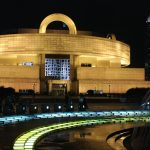World Day to Fight Desertification. In the Algerian Sahara, traditional techniques for the recovery of 80 oases
80 oases were born in the Algerian Sahara, thanks to the recovery of the ancient mines of water, the treasures. An ancient method that stops the advancement of the desert. It announces – for the World Day to Combat Desertification that is being celebrated tomorrow – ITKI, a traditional knowledge institute, wanted by UNESCO, based in Bagno a Ripoli, near Florence. Adrar’s regional government has been devoted to the restoration of this ancient technique of 5 million euros: it will serve to restore the network of horizontal tunnels that, running under the surface of the desert, produce water draining from the surface moisture of the surface. This is a method that avoids damaging the watercourse made up of the subterranean wall which, alternatively, attracts the deep wells that are dug into the Sahara with modern techniques.
“The guttering method, the horizontal drainage tunnels, gives the water that the environment can produce and basically what the human communities of the desert inhabitants can use without waste to preserve the oases,” explains Pietro Laureano, president Of ITKI and oasis conservation expert. “To give way to this ancient network, largely abandoned after the arrival of excavators that traverse the surface of the Sahara to the fossil water springs, the Algerian Adrar government has engaged with an important amount of economic resources. But it is not enough: restoring the galleries pattern with traditional material will be local associations, the same ones that will continue to keep them in the future. ” The work that creates the other, in short, with significant economic and environmental savings, even in terms of the production of avoided greenhouse gas
But it is above all the general effectiveness to rely on in choosing traditional techniques for soil, water and energy recovery. The fight against desertification goes largely to the reuse of simple and cheap methods, linked to local tradition. The 80 catchments that will be recovered with the 5 million made available are intended to serve for the cultivation of as many oases, about a third of those in the region. “Among these,” Laureano explains, “there are oases connected to each other, arranged like a green ribbon inside the Sahara, but also isolated oases. The most incredible is located in an area without inhabited areas or roads for about 150 square kilometers. The inhabitants, about 50 families, refused to abandon her to live in the capital of the region, as was proposed to them: now the restoration of the sheathing will allow the maintenance of the palm grove that gives life to the whole village. In this area, we found a paleolithic graffiti in the observation where a herd of elephants is seen, further demonstrating that the Sahara was still a large green area 15,000 years ago. ”
Desertification, according to the data provided by the Uncd (United Nations Convention), represents a percolation for the arid, semiarid and dry areas present on all continents. It threatens a quarter of the world’s lands and over 1 billion people in the 100 most affected countries. The most dramatic situation, however, remains the African one, where desertification puts at risk 73% of the cultivated arid lands. The Sahara, in short, advances: To stop it, it is often more useful to resort to traditional techniques than to the high intensity methods of energy waste and investment.








